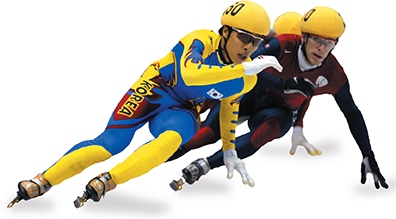Conservation of Energy
When energy changes from one form to another, the total energy remains unchanged even though many energy conversions may occur. This is one of the most important concepts in science, the law of conservation of energy.  The law of conservation of energy states that energy cannot be created or destroyed. According to the law of conservation of energy, energy can be converted from one form to another. However, in a closed system, the amount of energy present at the beginning of a process is the same as the amount of energy at the end. (In a closed system, nothing can enter or leave.)
The law of conservation of energy states that energy cannot be created or destroyed. According to the law of conservation of energy, energy can be converted from one form to another. However, in a closed system, the amount of energy present at the beginning of a process is the same as the amount of energy at the end. (In a closed system, nothing can enter or leave.)
You know that if you stop pedaling when you're riding a bike on a flat path, the bike will eventually come to a stop. The moving bike had kinetic energy. Where did the bike's kinetic energy go? The bike slowed down and stopped because of frictional forces acting over a distance. The work done by friction changes kinetic energy into thermal energy.
As a bicycle moves, it encounters friction with the ground and the air. Such friction causes a continual conversion of kinetic energy into thermal energy. Thus, as the bicycle slows, it gains thermal energy. So do the ground and the air. When the energy lost to frictional forces is accounted for, energy is conserved overall.
Recall that friction within machinery reduces efficiency. Friction is a major cause of energy consumption in cars and factories. All moving parts are subject to friction.
You can reduce friction but you can't avoid it. Friction is everywhere. Even the skaters in Figure 11 are subject to friction. Recall that objects moving through the air are slowed by air resistance. In many cases, most of a falling object's potential energy is converted into thermal energy because of air resistance.
You can ignore the effects of friction in many everyday situations. A marble dropped from one meter above the ground, for example, encounters so little air resistance that it can be ignored.
Figure 11 Although speed skaters slide quickly over smooth ice, they are still slowed down by friction with the air and the surface of the ice.
Inferring What are two ways that skaters can reduce friction?






